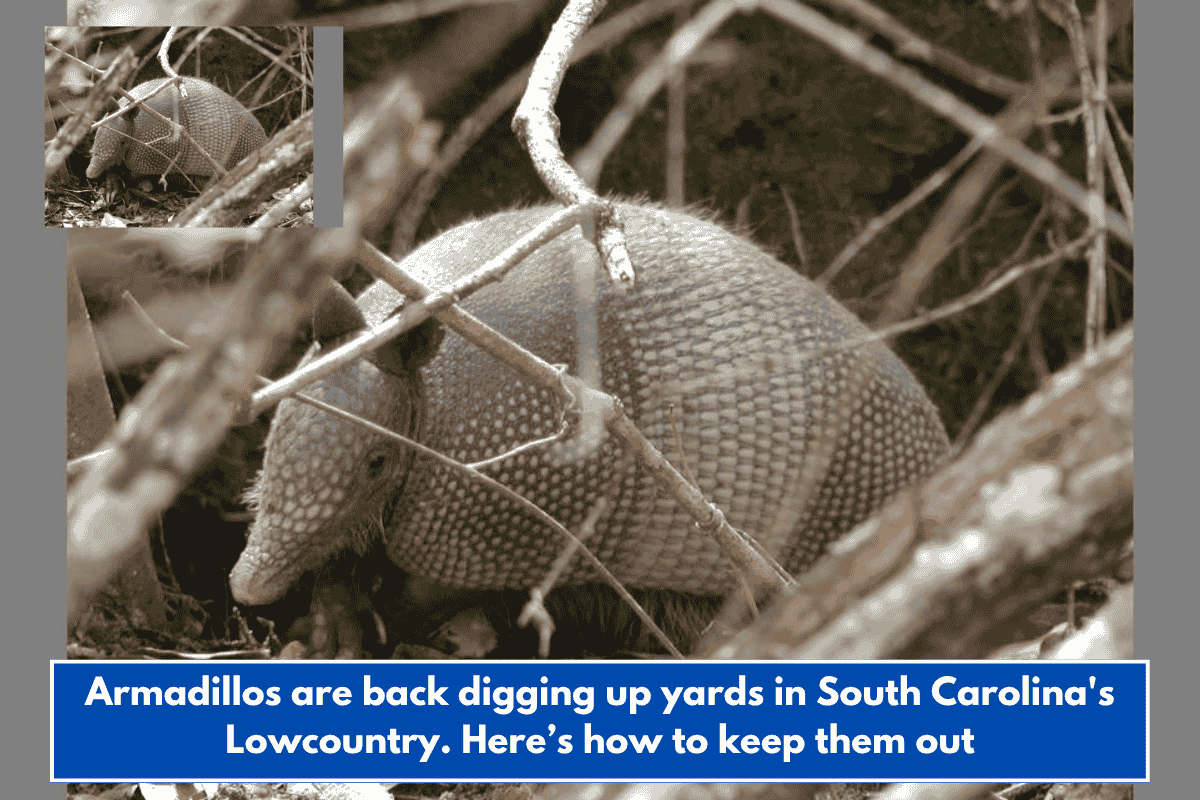In recent years, armadillos have made their way into the sandy soils of South Carolina’s Lowcountry. Once mostly found in Texas and parts of the Southwest, these armored mammals have gradually expanded their range into Georgia, Florida, and coastal areas like Beaufort County. While their unique appearance may catch your eye, armadillos can cause problems in your yard and even pose health risks. Here’s what Lowcountry residents need to know about these curious creatures.
Where Do Armadillos Live?
Armadillos are creatures of habit, preferring shady, wooded areas with soft soil, especially near creeks or rivers. They thrive in temperatures between 40 and 80 degrees Fahrenheit, which is why they’re most commonly spotted in the Lowcountry during dawn or dusk. The South Carolina Department of Natural Resources (SCDNR) notes that armadillos tend to stay in areas where the climate is mild and temperate.
In search of food, these nocturnal creatures often root around flower beds, lawns, and golf courses, feeding on insects like ants, termites, and sometimes frogs.
Why Are They a Problem?
While armadillos aren’t a major threat to crops or livestock, they can still cause trouble for homeowners. Here’s a look at the most common issues:
- Digging Burrows: Armadillos tend to dig deep burrows under homes, driveways, patios, and pool decks, which can lead to foundation damage.
- Plant Damage: They uproot plants and destroy flower beds while foraging for food.
- Turf Destruction: Their rooting activity, while searching for insects, can ruin lawns, often leaving behind damage that may resemble that of raccoons.
- Attracting Other Pests: Their presence can lead to an increase in other pests, especially if residents are feeding outdoor pets.
Cliff Boatwright from Tracks Animal Control in Beaufort explains that feeding outdoor pets, like cats, often attracts other critters to the yard, including armadillos. To avoid this, it’s advised to bring pet food inside at night.
Are Armadillos Dangerous?
Armadillos are generally not aggressive and rarely bite. However, they can still pose health risks. According to the SCDNR, armadillos are known to carry the bacteria that causes leprosy (Hansen’s disease), as well as the parasite Trypanosoma cruzi, which causes Chagas disease. Though the chances of transmission are low, it’s always best to avoid handling armadillos or coming into contact with their blood or fluids.
If you are scratched, bitten, or come into contact with a dead armadillo, it’s important to consult a healthcare provider.
How to Keep Armadillos Out of Your Yard
If armadillos have become a nuisance or you’re looking to prevent them from invading your yard, here are some helpful steps:
- Install a Fence: Armadillos are poor climbers and jumpers. A short, sturdy fence buried at least a foot underground can help keep them out of your yard.
- Make Your Yard Inhospitable: Spread mulch or wood chips around gardens and flower beds. This texture discourages armadillos from digging.
- Eliminate Their Food Source: Armadillos dig to find insects, so using insecticides on your lawn can help reduce their motivation to visit.
- Use Scent Deterrents: Sprinkling cayenne pepper or other strong, spicy powders in areas where armadillos frequent can help drive them away, as they dislike strong smells.
- Set Humane Traps: Live traps can be set at burrow entrances or along common paths. However, in South Carolina, it’s illegal to relocate a trapped armadillo. They must either be dispatched on-site by the homeowner or a licensed professional, as stated by the SCDNR.
While armadillos may add an element of curiosity to your backyard, they can cause significant damage if left unchecked. Whether it’s by digging up your garden or potentially carrying diseases, these creatures require a bit of attention. If you encounter one, it’s best to observe from a safe distance and seek professional help if needed.









